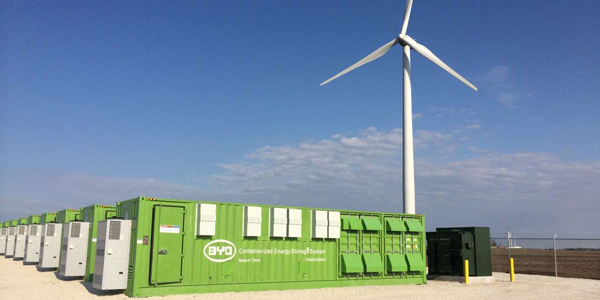By Amanda Durish Cook
MISO’s first storage-as-transmission proposal has drawn several protests from stakeholders who say the plan gives transmission owners an unfair advantage in developing the resources.
Multiple entities said the ruleset, filed with FERC on Dec. 12, is geared to providing incumbent TOs an effective monopoly on storage assets functioning as transmission, harming competition. Several urged FERC to reject the filing (ER20-588).
The proposal limits storage-as-transmission assets to transmission-only functions operated by TOs. As such, MISO labeled these resources storage-as-transmission-only assets (SATOA), and they would be barred from simultaneous participation in its energy markets — for now. (See Despite Pushback, MISO Pursuing TO-only SATA.) The RTO has said its 802-page plan will avoid introducing complexities around cost recovery, particularly related to how non-TOs would be compensated for providing transmission services.
MISO’s 2019 Transmission Expansion Plan (MTEP 19) includes just one SATOA project proposed for Wisconsin, but the RTO doesn’t have a cost-recovery mechanism for such assets. (See MTEP 19 Could Yield First MISO SATA Project.) Its Board of Directors is slated to hold a special vote on approval of the project once FERC gives the go-ahead on the rules, including cost recovery.
In comments filed with FERC, LSP Transmission Holdings said the proposal “as presented would effectively create a storage project monopoly for MISO’s incumbent transmission owners, just as this promising technology is in its infancy.”
A group of nearly 20 entities — including environmental nonprofits, consumer groups and utilities such as DTE Energy — said the ruleset was unlawful because it creates unduly discriminatory preference for MISO’s TOs.
The group also said the plan ignores FERC’s requirement that RTOs remove barriers to the participation of electric storage resources, arguing that Order 841 and MISO’s SATOA definition cannot be considered in isolation. It also contends that MISO’s Planning Advisory Committee originally wanted non-TOs and TOs alike to propose and construct SATOA, but that MISO ultimately favored the wishes of the latter.
“MISO’s decision to ignore the PAC’s recommendation in favor of the SATOA proposal demonstrates a lack of independence from the will of its TO members,” the groups wrote.
DTE representatives had promised to protest the filing during December’s board meeting, where directors voted unanimously to approve MTEP 19, which contains American Transmission Co.’s Waupaca area energy storage project meant to ease transmission reliability issues in central Wisconsin. In stakeholder meetings, DTE has repeatedly said the TO-only provision amounts to preferential treatment because generation owners cannot operate SATOA.
Not ‘Comparable’
MISO officials have said storage developers and owners who are not classified as TOs could still propose projects under existing rules on selecting non-transmission alternatives (NTAs) in the place of transmission projects. The RTO last year placed several mentions of storage resources into BPM 20, the business practices manual managing NTAs.
But storage owners and developers said the treatment remains unequal because NTAs must first clear MISO’s approximately three-year generation interconnection queue, which is not a requirement for TOs proposing SATOA, who instead submit their projects for study through the annual MTEP process.
Invenergy Storage Development complained the NTA option doesn’t offer “comparable opportunities.”
“Unlike SATOA, companies proposing NTA projects must first proceed through the multiyear generator interconnection queue, and unlike SATOA, those projects would be required to pay transmission charges with respect to the delivery of energy when the storage facility is charging from the MISO transmission grid. As a result, even though an NTA might present the very same storage solution as a SATOA, it cannot effectively compete against a SATOA, and transmission owners will maintain a monopoly on owning storage projects serving as a transmission asset,” Invenergy said in its protest.
Invenergy added that MISO’s proposed ruleset “ignores the fact that any expertise that transmission owners are assumed to have as to their respective transmission systems or in developing and owning traditional transmission, is inapplicable to SATOA — it is developers, like Invenergy, that have the relevant experience in owning and operating storage projects.”
The Michigan Public Service Commission said it was similarly “compelled” to oppose the filing because MISO isn’t proposing equal treatment for TOs’ and non-TOs’ storage projects. “No storage project should have an unfair advantage over any other project. Since the SATOA proposal discriminates against non-TO storage projects in favor of TO projects, the MPSC urges the commission to reject the proposal and direct MISO to collaborate with interested stakeholders to prepare a truly nondiscriminatory proposal,” it said.
Storage developer GlidePath said MISO’s proposal “completely misses the mark” and called it a “rushed solution.” Instead of “encouraging the development of single-use storage devices limited only to supporting the transmission system,” GlidePath said the RTO should create a more comprehensive compensation mechanism for storage resources and other generators that can support the transmission system.
GlidePath also said there are “clear competitive concerns inherent in permitting” SATOA to circumvent MISO’s interconnection process.
MISO Director of Planning Jeff Webb has predicted that the RTO will early this year begin addressing the issue of allowing storage functioning as transmission to simultaneously function in the energy market.




